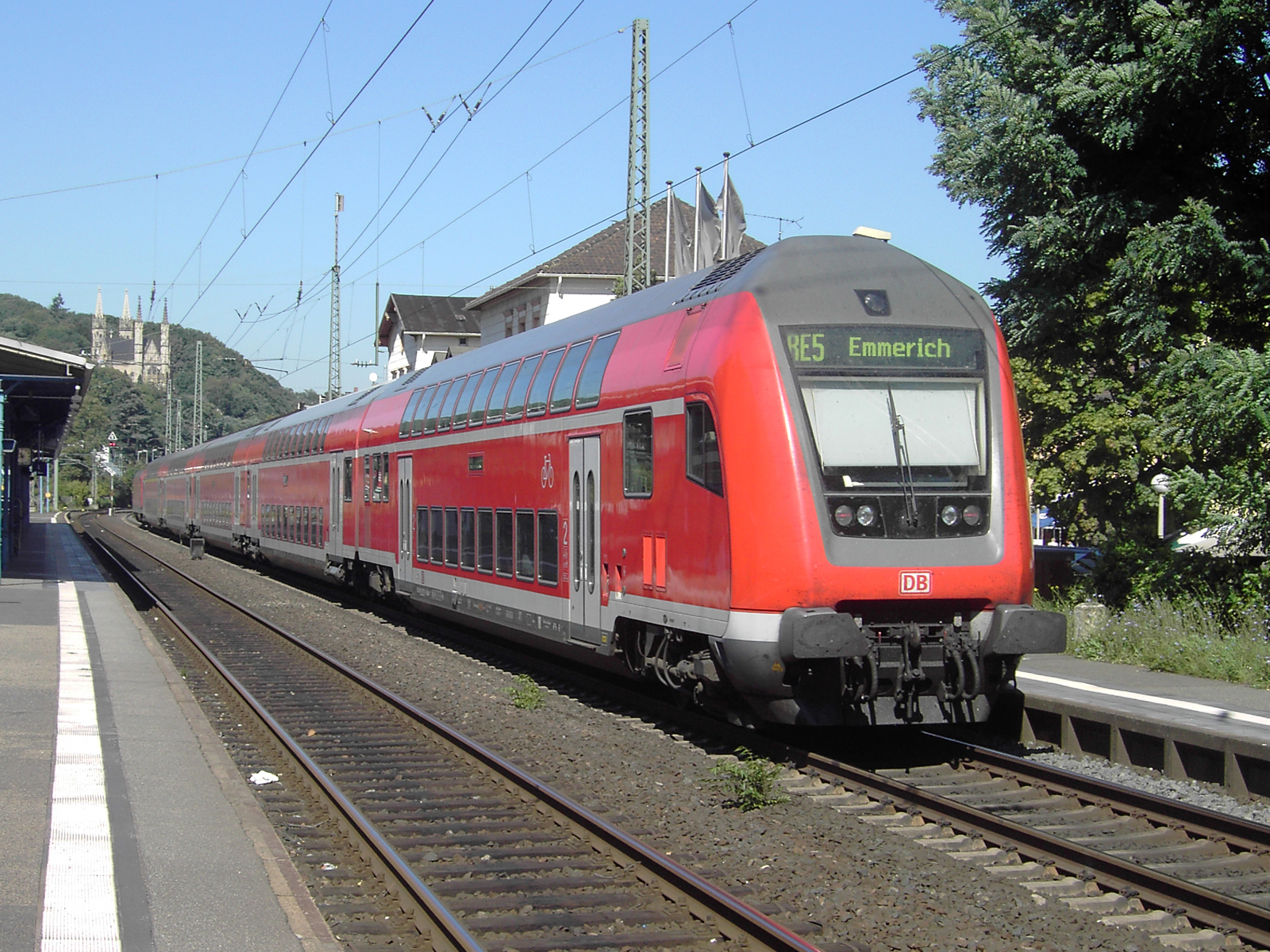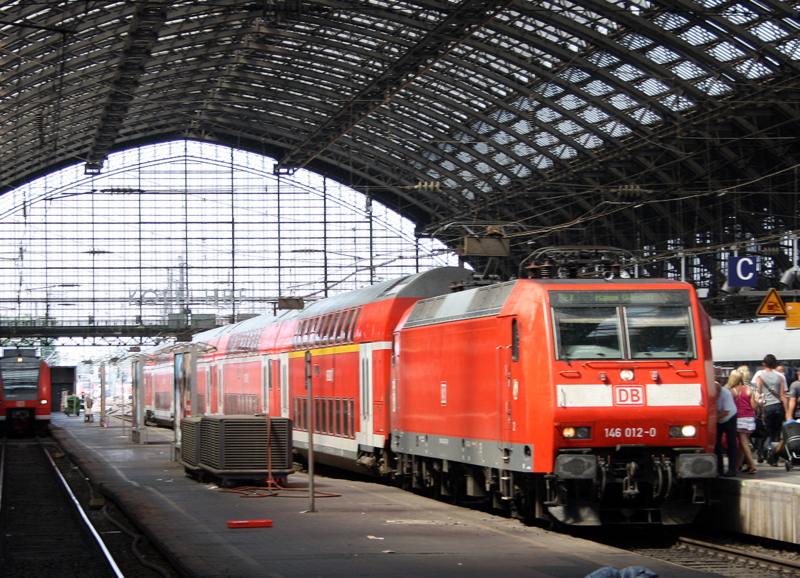|
Köln-Mülheim Station
Köln-Mülheim is a railway station situated at Mülheim, Cologne in western Germany. It is served by several regional trains, the S6 and S11 lines of the Rhine-Ruhr S-Bahn and the 13 and 18 lines of Cologne Stadtbahn. History In the 19th century there were several stations in Mülheim, since all the private railway companies had separate lines and railway facilities. The stations of the Cologne-Minden Railway Company (german: Cöln-Mindener Eisenbahn-Gesellschaft, CME) on the line between Cologne and Duisburg and the Bergisch-Märkische Railway Company (''Bergisch-Märkische Eisenbahn''-Gesellschaft, BME) on the Gruiten–Cologne-Deutz railway) were next to each other in Buchheim-Strasse (now Wiener Platz). The station of the Rhenish Railway Company (''Rheinische Eisenbahn-Gesellschaft'', RhE) on the Troisdorf–Mülheim-Speldorf railway was built outside the town at the site of the current Cologne-Mülheim station. After the nationalisation of the railway companies there ... [...More Info...] [...Related Items...] OR: [Wikipedia] [Google] [Baidu] |
Railway Station Types In Germany
The railways in Germany use several abbreviations to differentiate between various types of stations, stops, railway facilities and other places of rail service. Places with a set of points * – ' (railway station), defined as a place where trains may start, terminate, stop, overtake, meet or change directions, and that has at least one set of points. It can be additionally named after its purpose: ** – ', the main or central station of a town or city. Also the only abbreviation commonly found on station timetables and signs. ** – ' (passenger station), usually used to differentiate in places that have several types of stations, but only one passenger station. ** – ' ( long distance station) ** – ' (freight station) ** – ', a station only for operational tasks like train overtakes. ** – ' ( marshalling yard) ** – ' (transshipment station) ** – ', a station serving a power plant. ** – ' ( mail station) * – ' (part of a station), used when a station con ... [...More Info...] [...Related Items...] OR: [Wikipedia] [Google] [Baidu] |
Railway Stations In Germany Opened In 1874
Rail transport (also known as train transport) is a means of transport that transfers passengers and goods on wheeled vehicles running on rails, which are incorporated in tracks. In contrast to road transport, where the vehicles run on a prepared flat surface, rail vehicles (rolling stock) are directionally guided by the tracks on which they run. Tracks usually consist of steel rails, installed on sleepers (ties) set in ballast, on which the rolling stock, usually fitted with metal wheels, moves. Other variations are also possible, such as "slab track", in which the rails are fastened to a concrete foundation resting on a prepared subsurface. Rolling stock in a rail transport system generally encounters lower frictional resistance than rubber-tyred road vehicles, so passenger and freight cars (carriages and wagons) can be coupled into longer trains. The operation is carried out by a railway company, providing transport between train stations or freight customer faciliti ... [...More Info...] [...Related Items...] OR: [Wikipedia] [Google] [Baidu] |
Railway Stations In Cologne
Rail transport (also known as train transport) is a means of transport that transfers passengers and goods on wheeled vehicles running on rails, which are incorporated in tracks. In contrast to road transport, where the vehicles run on a prepared flat surface, rail vehicles (rolling stock) are directionally guided by the tracks on which they run. Tracks usually consist of steel rails, installed on sleepers (ties) set in ballast, on which the rolling stock, usually fitted with metal wheels, moves. Other variations are also possible, such as "slab track", in which the rails are fastened to a concrete foundation resting on a prepared subsurface. Rolling stock in a rail transport system generally encounters lower frictional resistance than rubber-tyred road vehicles, so passenger and freight cars (carriages and wagons) can be coupled into longer trains. The operation is carried out by a railway company, providing transport between train stations or freight customer faciliti ... [...More Info...] [...Related Items...] OR: [Wikipedia] [Google] [Baidu] |
Rhein-Wupper-Bahn
The Rhein-Wupper-Bahn is a Regionalbahn service in the German state of North Rhine-Westphalia. It connects the cities of Wuppertal, Solingen, Leverkusen, Cologne and Bonn and it is operated by National Express. Route The line runs mainly over the tracks of three railway lines: *from Wuppertal Hauptbahnhof to Gruiten station over the Düsseldorf–Elberfeld railway, built from 1838 to 1841 by the Düsseldorf-Elberfeld Railway Company, *from Gruiten to Köln-Mülheim station over the Gruiten–Köln-Deutz railway, opened on 25 September 1867 and 8 April 1868 by the Bergisch-Märkische Railway Company and *from Cologne Hauptbahnhof to Bonn-Mehlem over the West Rhine Railway, opened on 15 February 1844 by the Bonn–Cologne Railway Company and extended to Koblenz on 11 November 1858 by the Rhenish Railway Company. The trains of the Rhein-Wupper-Bahn (RB 48) stop at all stations on the line. They run daily from 5 am to 20 pm at hourly intervals between Wuppertal Hauptbahnhof and ... [...More Info...] [...Related Items...] OR: [Wikipedia] [Google] [Baidu] |
Rhein-Express
The Rhein-Express is a Regional-Express (RE 5 (RRX)) service, which generally follows the Rhine (german: Rhein) river. It runs daily every hour from 5 am to 9 pm from Wesel via Oberhausen, Duisburg, Düsseldorf, Cologne, Bonn, Remagen and Andernach to Koblenz, in the German states of North Rhine-Westphalia and Rhineland-Palatinate. It is the fourth-most used regional express line in the VRR network with approximately 48,000 passengers a day. Until the timetable change in December 2016, the Rhein-Express ran to/from Emmerich. Operations on this section and the additional services provided by Regionalbahn service RB 35 (''Der Weseler'') have since been operated as part of the Rhein-IJssel-Express (RE 19). History The ''Rhein-Express'' was established in 1998 with the introduction of the integrated regular interval timetable in North Rhine-Westphalia (called ''NRW-Takt'') by combining two services that previously started or finished in Cologne. Originally, the RE 5 service stop ... [...More Info...] [...Related Items...] OR: [Wikipedia] [Google] [Baidu] |
NRW-Express
The NRW-Express is a Regional-Express rail service in the German state of North Rhine-Westphalia (NRW), running from Aachen via Cologne, Düsseldorf, Duisburg, Essen, Bochum and Dortmund to Hamm as line RE 1. The line is part of the Rhine-Ruhr Express (RRX) network and is operated by National Express. The service has one of the highest levels of patronage in Germany with about 110,000 passengers per day, mainly commuters and students. History Today's ''NRW-Express'' replaced existing express services on individual sections of the route after the regionalisation of transport in Germany. A number of stations previously served by long-distance trains, such as Düsseldorf-Benrath and Wattenscheid came to be served by regional services only. The NRW-Express was first classified as ''Regionalschnellbahn'' ("regional fast train") RSB 1, then as ''StadtExpress'' ("city express") SE 1 and eventually as ''Regional-Express'' RE 1, when it was also given the name of ''NRW-Express''. T ... [...More Info...] [...Related Items...] OR: [Wikipedia] [Google] [Baidu] |
Köln Messe/Deutz Station
Köln Messe/Deutz station (called ''Köln-Deutz'' until November 2004, Colognian: , ) is an important railway junction for long-distance rail and local services in the Cologne district of Deutz in the German state of North Rhine-Westphalia. It is situated close to the eastern bank of the Rhine and connected via the Hohenzollern Bridge to Köln Hauptbahnhof, the city's main station, which is just a few hundred metres away. The Cologne Trade Fair (german: Koelnmesse) grounds are directly north of the station, hence the ''Messe'' in the station's name. The Stadtbahn station of ''Deutz/Messe'' is nearby and connected by a pedestrian tunnel. The station is a junction station, which has platforms on two levels: the high-level platforms are used by trains running in the east-west direction across the Hohenzollern Bridge to and from Köln Hauptbahnhof. The lower level (''Köln Messe/Deutz tief'') is used by trains running in a north-south direction bypassing the Hauptbahnhof from Köln-M� ... [...More Info...] [...Related Items...] OR: [Wikipedia] [Google] [Baidu] |
Köln-Chorweiler Station
Köln-Chorweiler is a combined light rail and railway station situated at Chorweiler, Cologne in western Germany. It is served by the S11 line of the Rhine-Ruhr S-Bahn and line 15 of Cologne Stadtbahn. It is classified by Deutsche Bahn as a category 4 station. History The genesis of the joint Stadtbahn and S-Bahn station and the railway lines on which it lies, is closely linked to the development of a large housing estate of Chorweiler. Both the S-Bahn line, a loop from the Cologne–Neuss railway, as well as the Stadtbahn line, an extension of the line to Longerich, were built before the actual start of construction of the estate on a green-field site. The staggered start-up was based on the progress of construction of the residential buildings: the former tram line 9 operated to Chorweiler from 17 November 1973, while the S-Bahn line S11 ran to Chorweiler from 1 June 1975 and was extended to Chorweiler Nord on 22 May 1977. S-Bahn station The S-Bahn station consists of ... [...More Info...] [...Related Items...] OR: [Wikipedia] [Google] [Baidu] |
Bergisch Gladbach Station
Bergisch Gladbach station is a terminal station and forms the public transport hub of the city of Bergisch Gladbach, in the German state of North Rhine-Westphalia. It has been the terminus of line S 11 of the Rhine-Sieg S-Bahn (now part of the Rhine-Ruhr S-Bahn) since 1 June 1975. This service now runs via Cologne, Neuss and Düsseldorf to Düsseldorf Airport Terminal station. It also includes the city’s freight yard. The section of the Sülz Valley Railway between Köln-Mülheim station and Bergisch Gladbach is electrified. The station is classified by Deutsche Bahn The (; abbreviated as DB or DB AG) is the national railway company of Germany. Headquartered in the Bahntower in Berlin, it is a joint-stock company ( AG). The Federal Republic of Germany is its single shareholder. describes itself as the se ... as a category 5 station. The station has eight operable tracks, one with a platform and overhead wiring for S-Bahn traffic, the rest serve the freight yard. Other ... [...More Info...] [...Related Items...] OR: [Wikipedia] [Google] [Baidu] |
Troisdorf–Mülheim-Speldorf Railway
The Troisdorf–Mülheim-Speldorf railway is the main axis for freight between Cologne and the Ruhr area in Germany and the Netherlands. It connects the marshalling yards of Duisburg-Wedau (formerly important, now closed and demolished) and Gremberg (in Cologne). History The track was opened on 18 November 1874 by the Rhenish Railway Company (german: Rheinischen Eisenbahn-Gesellschaft) to connect its Ruhr line with the Right Rhine line. It runs parallel, but a few kilometres to the east of the Cologne–Duisburg trunk line opened by the Cologne-Minden Railway Company (''Cöln-Mindener Eisenbahn-Gesellschaft'') thirty years earlier, from which it hoped to draw traffic. Since the line bypasses the centre of the towns, soon after the nationalisation of both companies in 1879/1880 passenger operations were closed on parts of it. Except on a few short sections the line is now used exclusively for freight. Passengers After the Second World War passenger services ran only on the sec ... [...More Info...] [...Related Items...] OR: [Wikipedia] [Google] [Baidu] |
.jpg)



